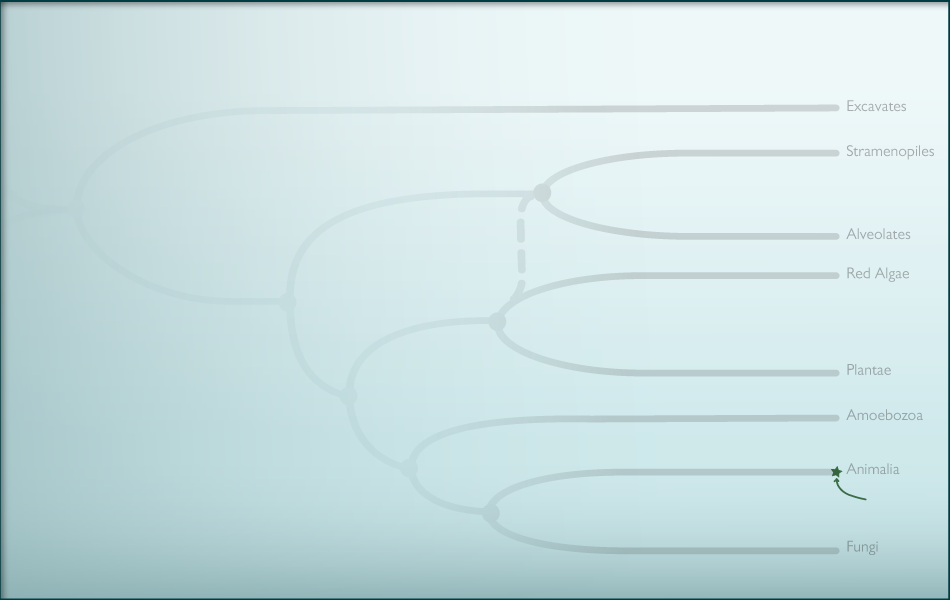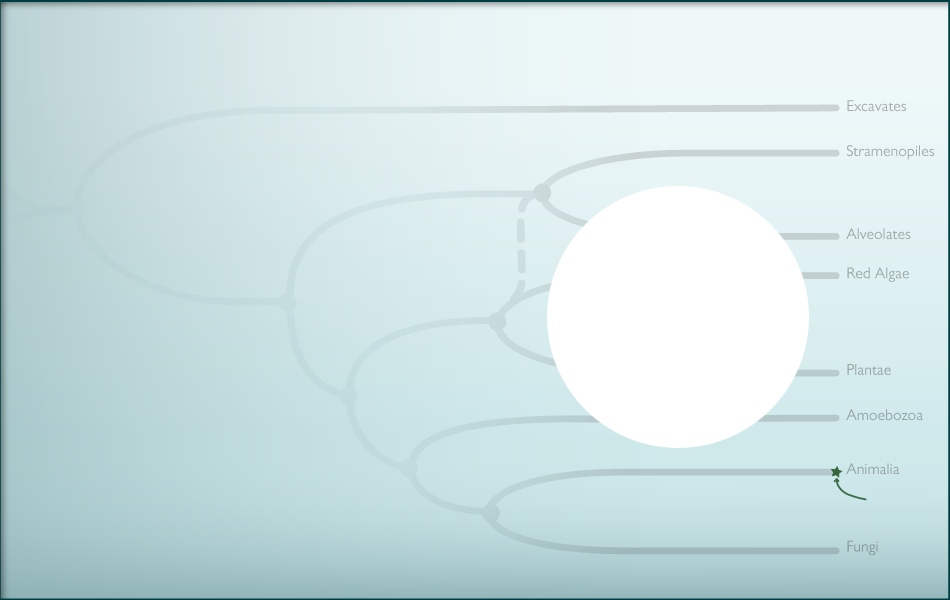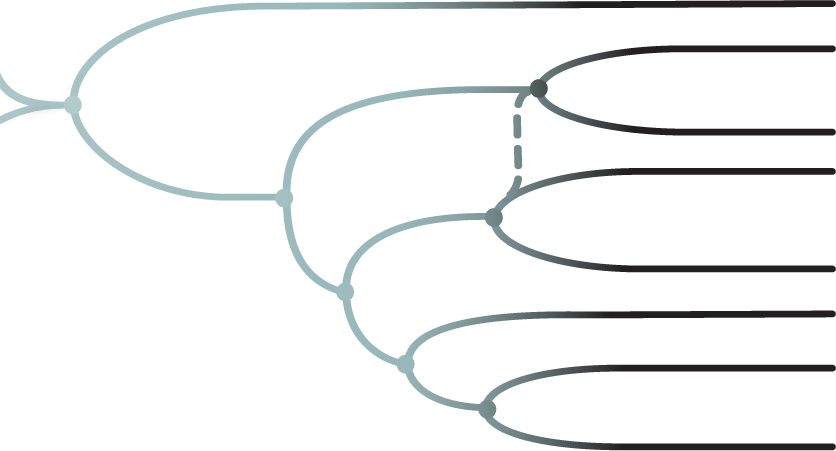EUKARYOTA
Eukaryota differ from bacteria and archaea by possessing a nucleus. Most are microorganisms, but the domain also includes all large complex organisms, including animals, plants, and fungi. The name eukaryote comes from the Greek eu, meaning good or well, and karyon, meaning kernel.
Genetic analysis is refining our understanding of this domain. Eukaryotes are now being organized into genetic supergroups: unikonts (animals, amoebas, and fungi), archaeoplastida (plants and red algae), chromalveolates (alveolates and stramenopiles), and excavates. One of these groups must have been the first to branch off after the formation of the new eukaryotic domain—and thus contain clues to the nature of the eukaryotes’ earliest ancestors—but it’s not yet known which.
Los Eukaryota se distinguen de las bacterias y arqueas por tener un núcleo. La mayor parte son microorganismos, pero el dominio además contiene todos los organismos complejos y grandes, incluyendo animales, plantas y hongos. El nombre eukaryota viene del griego eu, que significa bueno o bien, y karyon, que significa grano.
El análisis genético está clarificando nuestro conocimiento de este dominio. Hoy en día los Eucariontes son clasificados en super grupos genéticos: unikontes (animales, amebas, y hongos), arqueoplastidos (plantas y algas rojas), cromalveolados (alveolados y stramenopilos), y excavados. Uno de estos grupos debe de haber sido el primero en dividirse después de la formación del nuevo dominio eucarionte — y por lo tanto contiene pistas sobre la naturaleza de los primeros antepasados de los eucariontes — pero todavía no se sabe cuál es.
HERE
AQUÍ
Branch: Fungi
Example: Unknown
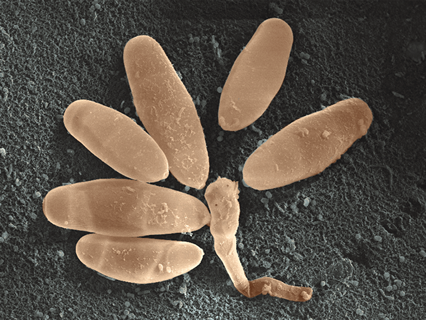
Colorized Scanning Electron Micrograph (SEM) of fungal sporangia – the cases containing the fungi's reproductive spores – that were found in gypsum fracture communities, Gypsum Plain, Chosa Draw, NM.
Branch: Amoebozoa
Example: Unknown
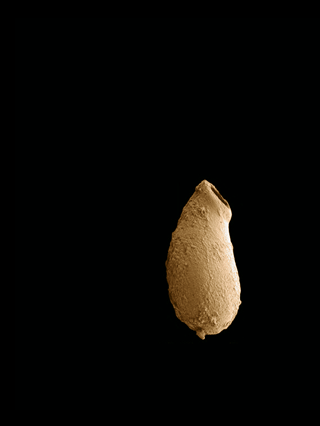
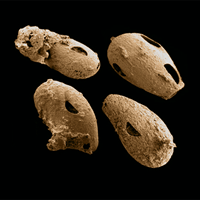
Populations of vase-shaped microfossils (VSMs) preserved by the billions in carbonate nodules from the ~742-770 million year old Chuar Group, Grand Canyon, Arizona. VSMs exhibit morphological and behavioral characters strikingly similar to those found in modern testate amoebae, including both arcellid amoebae (part of the Amoebozoa branch together with slime molds) and euglyphid amoebae (part of the Rhizaria branch). Together with a fossil red, green, and xanthophyte algae preserved in other Proterozoic rocks, VSMs tell us that crown-group eukaryota had appeared and were diversifying by early Neoproterozoic time, before the onset of worldwide glaciation, and possibly coincident with a rise in atmospheric oxygen. Here appears to be an example of a trait-based group (the amoebas) that gets split up into some very different branches in the genetically based tree.
Inset: VSMs also represent the earliest body fossil evidence for predators. These are the same VSMs as in the main image, but showing what appear to be bite marks. Was some other organism preying on them?
Branch: Fungi
Example: Saccharomyces sp.
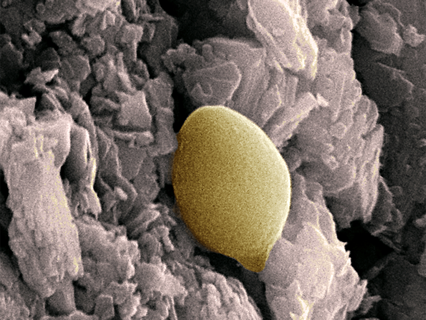
This colorized Scanning Electron Micrograph (SEM) shows an unknown species of Saccharomyces (colored yellow) on a zeolite crystal. Saccharomyces is a genus of yeast, several of which, particularly S. cerevisiae, have been widely used in biological research. This is because S. cerevisiae is a simple eukaryotic cell that can be used as a model for all eukaryota, including humans, for the study of such fundamental cellular processes as the cell cycle and cell division, DNA replication and recombination, and metabolism. Yeasts are also easily manipulated and cultured in the laboratory, which has allowed for the development of powerful standard techniques. Many proteins important in human biology were first discovered by studying their homologues in yeast, including cell cycle proteins, signaling proteins, and protein-processing enzymes.
Branch: Excavates
Example: Giardia
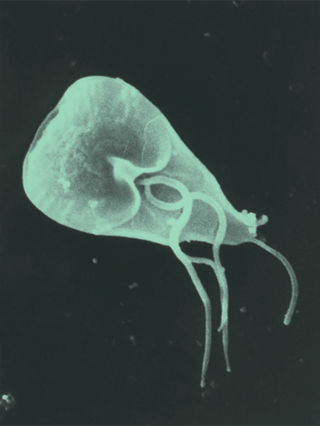
Excavates are eukaryota that either lack mitochondria all together or have mitochondria that are highly modified. The Excavate Giardia is a parasite that causes serious intestinal discomfort and is transmitted by contaminated drinking water.
Branch: Stramenopiles
Example: Diatom
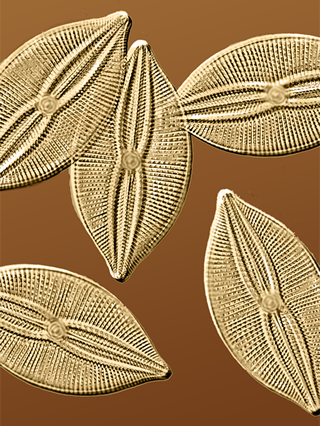
Diatoms, often referred to as "brown" or "golden" algae, are a unique group of algae that produce a cell wall made of hydrated silica glass. The group also includes kelp, intestinal parasites, and "water molds."
Branch: Animalia
Example: Opodiphthera eucalypti
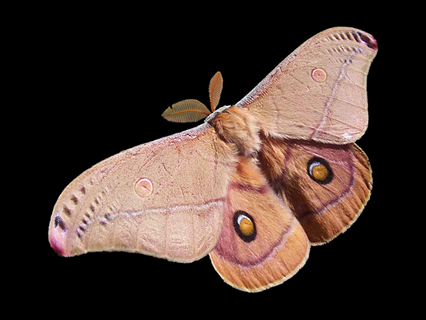
The large emperor gum moth, Opodiphthera eucalypti, from Australia and New Zealand, is from the diverse eukaryotic kingdom of Animalia, which includes 36 phyla and over 1.1 million known species. Several things distinguish Animalia from the other eukarota—plants, algae and fungi. Animalia are mostly multicellular, lack rigid cell walls, and are motile—that is, they move around. Animalia are heterotrophic, meaning they are unable to make their own nutrients from chemicals, as autotrophic eukaryota do mainly through photosynthesis. Instead, Animalia consume and digest food to extract nutrients.
Emperor gum moths have very distinctive reddish-brown coloration and symmetrical markings, including four "eyes" on their wings. Males are larger than females and have feathery antennae. The moths eat so much as caterpillars that they don't eat again after emerging from their cocoons. All they do is mate and lay eggs before they die. In 1962, they made scientific history when researcher Thomas D. C. Grace grew four cell lines from their ovaries in the first successful attempt to grow insect cells in the laboratory.
Branch: Branch Unknown
Example: “microcholla”
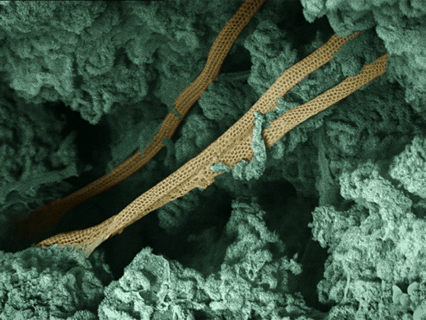
Who are they? Are they Eukaryotic ancestors? No one knows. In a Scanning Electron Micrograph (SEM) image, these mysterious reticulated filaments look like fishnet stockings. They have been nicknamed “microcholla” because their appearance also recalls the dried remains of dead cholla cactus branches that are found scattered across the landscape of the American Southwest. Fuzzy-looking actinobacteria are in the background. These organisms from Maelstrom Lavatube in Hawaii are found growing in a blue-green copper mineral (hydrated copper silicate) called chrysocolla.
